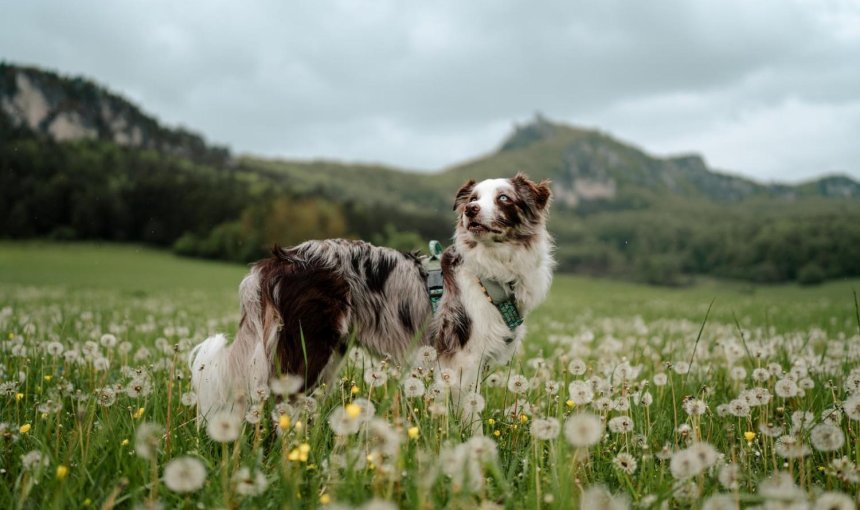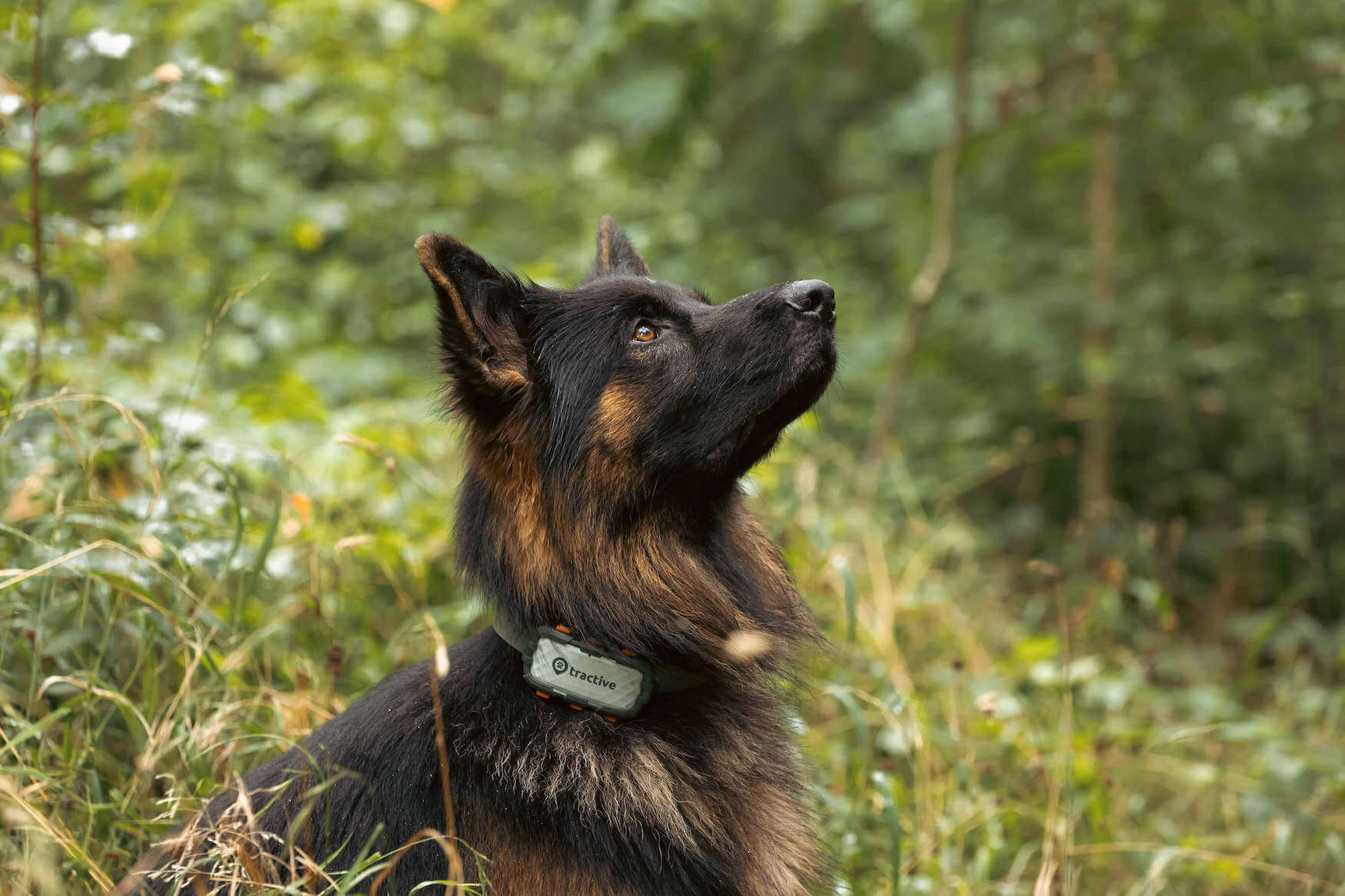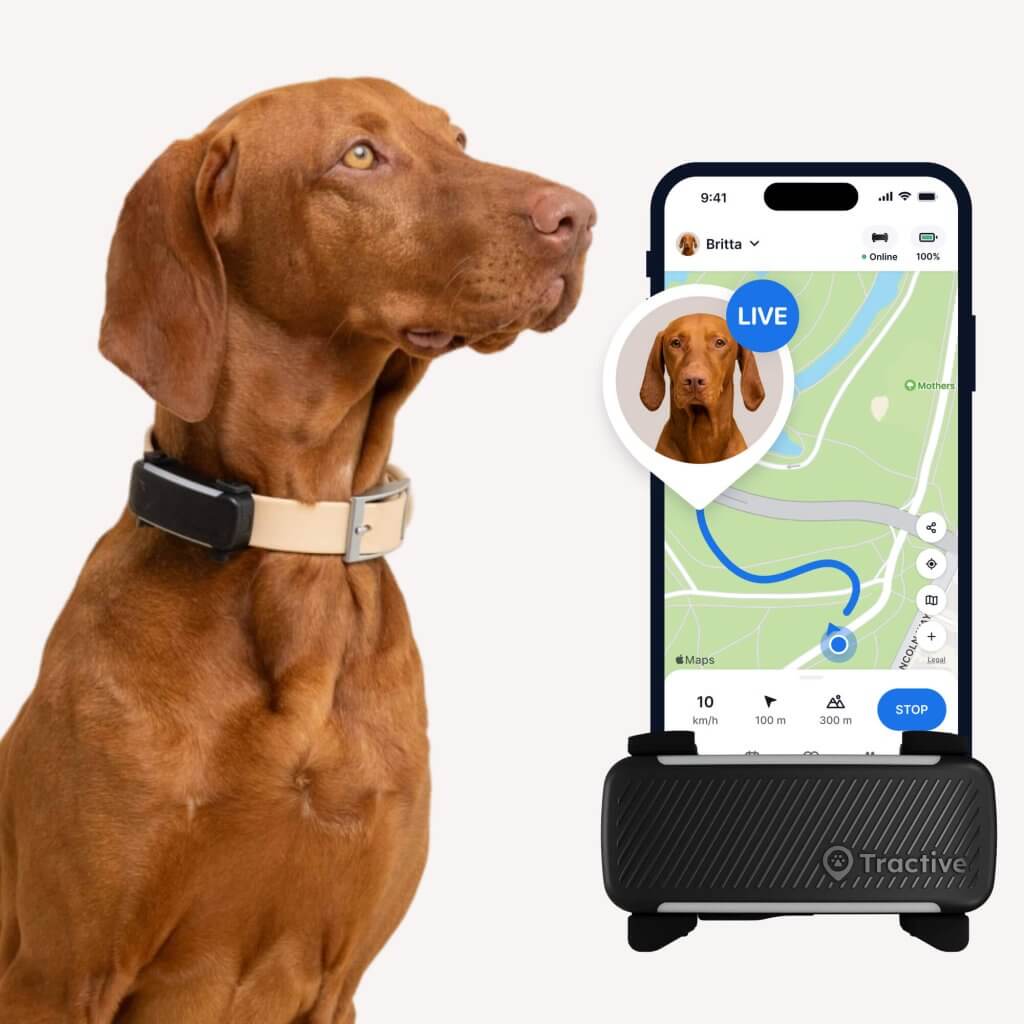10 Herding Dog Breeds That Just Can’t Sit Still!
Here's everything you need to know to give them the happiest, healthiest life by your side.

From protecting livestock to guarding farms, these active, loyal, intelligent pups that have been working besides humans for thousands of years – and yours will want to be useful to you right away! Here are 10 shepherd and cattle dog breeds we’ve gathered for you – and what little details you should keep in mind to keep them healthy, happy, and safe by your side. (Whether you’ve got a flock of sheep for them to tend or not.)

Always know your buddy is healthy & safe
Read more10 herding dog breeds from around the world
Got an open backyard or a dog park nearby and are ready to get active? Here are 10 shepherd dog breeds that’ll keep you on your toes all day long!
The Pembroke Welsh Corgi
Pembroke Welsh Corgis are small, sleek, swift little dogs that were bred to herd bigger animals, including cows. These little dogs originate from Wales and were a favorite of Queen Elizabeth II, the late queen of England. In fact, she owned more than 30 Corgis during her entire reign!
⚠️ Just don’t be fooled by their cute and cuddly appearance. Corgis are skilled hunters and have a high prey drive (or hunting instinct.)
The Collie family
You might think of Border Collies first – and these are the quintessential example of herding dog breeds that just can’t sit still! Or maybe Lassie, from the famous movie. But the Collie family includes:
- Australian Kelpies
- Bearded Collies
- Rough Collies (like Lassie)
- Shelties
- …and the Welsh Sheepdog (which IS actually part of this family)
Originally from Scotland and Northern England, Collies are another one of the livestock guardian dog breeds that love being around cattle, sheep, and other farm animals.
Plus, with their high energy and intelligence, they’re another breed of contenders in dog sports and agility competitions around the world.5
Beauceron dogs
Easy to mistake as a German Shepherd, Beauceron dogs are a shepherd dog breed originating from Central France. In fact, another name for them are Bas-Rouges (or red stockings) – after their distinctive “red” paws. Unlike Collies, Beauceron dogs tends to be calmer and gentler, temperament-wise – but they do tend to be slow to warm up to strangers.
In fact, besides herding, your Beau is also a skilled guard dog and might have a tendency to bark in the presence of unfamiliar people or pets. Make sure to wean them off this behavior gradually with plenty of training and quality time together.
Bouvier des Flandres
With sheep herding, cart pulling, and cattle droving under their belts, Bouvier des Flandres are a livestock guardian dog breed originating from Belgium. (Translated from French, their names literally mean “cow herders from Flanders.”) They’re also accomplished guard dogs and take excellently to police dog units.7
Much like Beauceron dogs, Bouviers are on the gentler side, temperament-wise – though they do also tend to be quite protective. They’re also highly trainable and can learn a variety of tricks and commands.
The Shepherd family
Probably one the most famous herding dog breeds is the Shepherd family – and yes, there’s more to it than just German Shepherds! These intelligent, active, protective dogs have been working alongside humans and keeping us on our toes from centuries now. Including:
- Anatolian Shepherds
- Australian Shepherds
- Belgian Malinois
- Dutch Shepherds
- White Swiss Shepherds
- …and more!

Catahoula Leopard dogs
Despite its unique name, Catahoula leopard dogs originate from the US – they’re named after the Catahoula parish in Louisiana. This is another active, good-natured dog breed that’s excellent for herding and guarding livestock, as well as taking care of children.
(And yup, their names also refer to their gorgeous spotted coats – similar to leopard fur.)
Canaan dogs
Easily the most wolf-like of the herding dog breeds, Canaan dogs originate from the Middle East – most commonly found in Israel, Jordan, Lebanon, and other countries along the Levant. It’s one of the oldest mixed breed dogs in the world and was used by Bedouin tribes to guard their livestock and camps. Much like others in the shepherd dog family, Canaan dogs are highly intelligent and trainable. Some have even been successfully trained as guide dogs for the blind.
The Mountain Dog family
This exceptionally fluffy herding dog family all tend to originate from cold, snowy, mountainous areas – including Switzerland, France, and Germany. Historically, they were used to herd cattle over the mountains – especially over long distances – as well as pull carts. Famously gentle and sweet-tempered, the mountain dog family tend to make great family dogs and love the company of children.
This family also includes:
- Bernese mountain dogs
- Greater Swiss mountain dogs
- St. Bernards
- Tibetan Mastiffs
- Great Pyrenees
- …and more!
Briard dogs
Another large shepherd dog breed from France, Briard dogs have been herding and protecting sheep in farms for centuries – though they’re more commonly kept as companion dogs now. But much like other herding dog breeds, Briards are intelligent, protective, very fond of children, and need some time to consider strangers as part of their “herd.”
The Hungarian herding dog family
With so many herding dog breeds from Hungary alone, we just couldn’t pick one – so here they all are, in their furry, fun-loving glory!
- Komondor
- Puli dogs
- Kuvasz dogs
- Pumi dogs
Where a smart dog tracker can help
With their intelligence, tons of energy, and need for a “job” where they chase and move things, your herding dog might also get bored easily. They might try to “herd” squirrels, cars, or even your kids! But without a job, it’s also possible they might try to run away or get into mischief. This is where a smart dog tracker like Tractive can help prevent an emergency. It’s a great tool to keep your herding dog safe, make sure they get enough exercise, and stop them from running off.
Strapped to your collar, you can now:
- Prevent your dog from escaping home.
Herding dogs are often escape artists. They might sneak out of the yard to chase something fun. The Tractive app lets you create an invisible “Virtual Fence” around your yard. If your dog crosses this line, you’ll get a message on your phone right away. This gives you a chance to go get them before they get too far. - Track your dog in real-time.
Whether your dog loves to run off-leash or has a knack for escaping, Tractive’s LIVE Tracking shows you exactly where they are on a map. You can follow their every move, and the tracker updates every few seconds. This means you can always find your dog, even if they’re out of sight. The tracker works anywhere with cell service, so you can feel confident letting your dog explore in safe areas. - Make sure they get enough exercise.
The Tractive tracker doesn’t just show you where your dog is – it also checks how active they are. You can see how many minutes they’ve been active, how many calories they’ve burned, and even set daily goals for them. This helps you make sure they’re getting all the exercise they need, so they don’t get bored and start looking for trouble. - Spot potential health issues early.
Sometimes, a dog that’s not moving as much as usual could be sick. Tractive’s health features can tell you about your dog’s sleep and activity. If there’s a sudden change in how much they’re moving, you’ll get a special alert. This can be an early sign that something is wrong, and it’s a good reminder to keep a close eye on them or talk to your vet.




